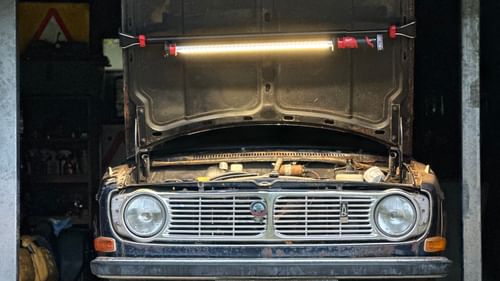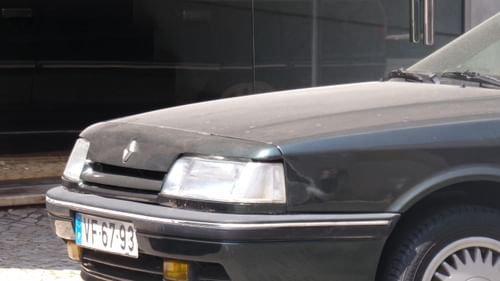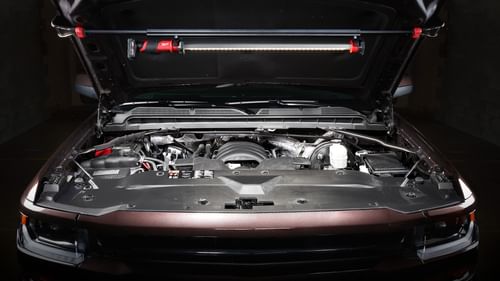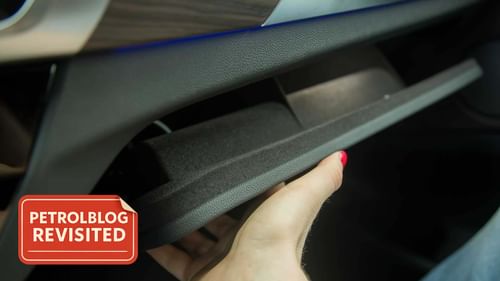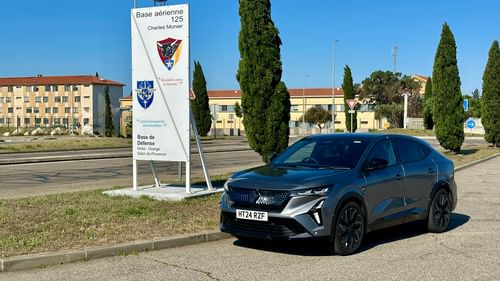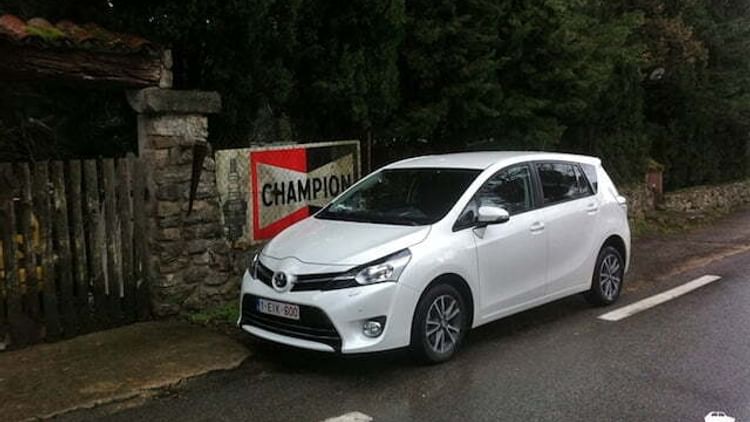
Driven: New Toyota Verso
Where: Nice, France
Date: 23rd January 2013
Price: £17,495 - £23,445
“The new Verso is a significant launch for Toyota.” These were the words used during the press conference at Toyota's impressive ED2 design centre in Southern France.
This is in part due to the fact that the C-MPV segment is a lucrative market, with 900,000 to 1,000,000 units shifted each year. Toyota hopes the Verso-shaped slice of the cake amounts to five percent, with 40,000 to 50,000 global sales.
It's also significant because it's the first Toyota brought to market under a European chief engineer. The Verso has always been a car designed and built with European tastes in mind, but the new car benefits from planning, design and engineering under the control of Toyota Motor Europe.
Cutting to the chase here, the Toyota Verso isn't your traditional PetrolBlog fodder. Indeed I'm pretty sure some dyed-in-the-wool readers will have already switched off and are busy enjoying repeats of Top Gear on Dave.
And to be honest the Verso is a car I've never paid much attention to. In fact I can't even remember the last time I saw one, primarily because the previous three generations have been excruciatingly dull to look at. It's a wonder Toyota didn't name it the Magnolia.
Styling
So it's good news that the styling of the 2013 Toyota Verso is a marked improvement over the old car. To be fair, sticking a brown paper bag over the old one would have been an improvement, but credit where credit's due, the styling of the new Verso makes it look almost appealing.
The new car looks deceptively lower and wider than its predecessor, but it's an illusion delivered by the new styling. The Toyota badge is bigger and sits lower to the ground, with the lower grille wider and taller. It brings the new Verso in line with the rest of the family and it looks suitably aggressive as a result. No doubt it will appeal to angry families. "Out of my way, my child is late for ballet class."
The side profile is typically slab-like, but it's a shame Toyota paid little attention to the back-end. The press conference described a 'characterful rear bumper', a term that's probably best left for use when describing JLo's bottom. As far as the Verso goes, I just see uniformity and a lack of flair.
But then do MPV buyers put exterior styling high on their list of priorities when searching for a new car? I'd have thought safety, practicality, reliability and cost of ownership would be the primary drivers for purchase.
Toyota's own research suggests that styling is an important factor, along with interior design and layout, efficient engines, Noise Vibration and Harshness (NVH) and driving dynamics. These were the five key areas Toyota looked at when seeking to make improvements over the outgoing model. Interesting that safety isn't mentioned, leading me to think that either customers see it as a given or Toyota would accept nothing less than a five-star Euro NCAP rating. Anyway, I've already covered styling, so what of the other four areas.
Interior
An MPV's interior has to withstand a huge amount of abuse. Over the course of its lifetime it will be subjected to the wear and tear associated with family life. It needs to be tough, practical and convenient. And overall the Verso scores very highly. Whilst there's little to stir the imagination, there's a general feeling that the Verso has what it takes to tackle 100,000 miles of 2.4 children. Everything falls close to hand and generally speaking it's well put together.
It's only when you start to dig a little deeper that Toyota's cost saving measures are brought to the fore. The centre armrest for example feels flimsy and rocks on its hinges. Then there's the central storage bin which, at its base, contains an inadequate piece of Fuzzy Felt hiding four bolts. A small but noticeable detail.
On the plus side the central storage bin is like a huge black hole and you could easily lose your dog or small child down there if you weren't careful. If your child is small enough, they could probably stand up in it, making the Verso an 8-seat MPV.
It's also worth saying that away from the impressively simple and convincing centre console some of the switches and buttons feel like they've been lifted from a mid '90s Toyota Carina. The mirror and window controls are the worst offenders. The edges of some of the multiple small storage areas also feel rough and unfinished.
But these niggles aren't enough to ruin a well executed space. Toyota's Easy Flat folding rear seat system is easy to master and provides 32 different seat configurations on the 7-seat version. Within seconds you can turn a 7-seater into a 2-seater with a fully flat floor. Then, within a few more seconds you can convert it back again. Faced with four or five years of living with the Verso this could turn out to be a significant factor.
Efficient engines
I was only able to test the 2.0-litre D-4D diesel engine, which Toyota has re-engineered to improve efficiency. A new variable nozzle turbocharger has been added, with Toyota also improving the lubrication and cooling of the engine. The result is that the maximum 310Nm of torque is now available 200rpm earlier and across a wider rev band (1,600 to 2,400rpm). This makes overtaking and motorway driving effortless.
CO2 emissions are down 10g/km to 129g/km and fuel economy is up from 53.3 to 57.6mpg. The engine is also 10kg lighter than before and supposedly quieter and more refined. On the evidence of the trip to Nice, it's hard to argue with this.
It's difficult to look beyond the power and efficiency of the diesel engine, but you can order your Verso with a 1.6-litre or 1.8-litre petrol engine, although the latter is available only with a Multidrive CVT transmission.
Noise Vibration and Harshness (NVH)
Toyota has worked hard on this area of the Verso and the fruits of its labour seem to have paid off. In true PetrolBlog style my NVH quality barometer is based on the sound of the horn. Hang on, bear with me on this. Press the horn on most cars and you'll instantly wake your passengers from their slumber. Some may even look up from their GamePadBoy to see what all the fuss is about.
Not so in the new Verso. Use the horn in the Verso and it sounds like the noise is coming from a couple of miles away. It's eerily silent in the cabin. I put this down to the new sound damping between the engine bay and the cabin. It works a treat.
There's also extra sound damping on the front pillar plus smaller, more aerodynamic door mirrors and improved door seals. Furthermore, Toyota has made the 2.0-litre diesel engine quieter by reducing combustion noise. The net result is a quiet and relaxed onboard environment, although a typically British wet day in the south of France meant that the sound of rain would drown out just about any other noise. Excuse the pun.
Driving dynamics
Stability, predicability and comfort are the things I'd be looking for when driving a compact MPV and the Verso scores highly in each department. Changes to the suspension, increased body rigidity and tweaks to the electric power steering make the new Verso a surprisingly satisfying car to drive. Not delightful, just satisfying.
It's quite telling that the new Verso feels at its best on a motorway where its good manners and large steering wheel inspire a huge amount of confidence. The ride is good too, making the Verso a strong candidate for those looking for a long term mile-muncher.
Yes the steering is vague and slow to respond and, despite what Toyota may claim, is lacking in feedback, but will Verso customers care? I suspect not, especially since the light steering and good allround visibility make it an incredibly easy car to manoeuvre at low speeds. Parking should be a doddle, especially with the rear-view camera (standard on Icon and Excel models).
Unfussy and well thought out
So in terms of delivering what they set out to do, the team at Toyota should be applauded. More than 470 parts have been changed, 60% of which are visible, the rest relating to improvements under the skin, especially dynamics and NVH. The new car is 20mm longer and offers 1,575mm x 1,430mm loadspace with both rear rows of seats folded flat and 155-litres of boot space with all seats folded up. This is fairly typical for a 7-seat MPV and one suspects that for the majority of the time it will be used with the rearmost seats folded flat, therefore giving 440-litres of space.
Toyota's commitment to safety is also worth a mention. Regardless of the trim level (Active, Icon, Excel), each safety item comes as standard, meaning multiple airbags, ISOFIX fixings, head impact protection, brake assist, stability control, traction control and hill-assist. Prices range from £17,495 for the entry level Active 5-seat to £23,445 for the Excel 7-seat. The 5-seat option is only available with Active trim.
The new Toyota Verso is a hard car to love but an easy car to like. From driving it you get the impression that someone has genuinely thought about making the old car better. Small improvements they may be, but they combine to present a rather convincing package. If you value ride comfort, a quiet cabin and function over form, you'll be impressed with the Verso. It's just a shame that overall it's let down by some of the aforementioned interior issues.
It's arguably one of the least PetrolBlog cars ever to appear on the site, but that doesn't stop me having a deep admiration for the new Verso. An unfussy and well thought out package that puts safety and convenience above bells and whistles. It's also much, much better to drive than you'd ever think. Toyota Motor Europe has done a top job which bodes well for future all-new Toyota models.
Pick of the bunch has got to be the mid-spec Icon trim with the 2.0-litre diesel engine. At £21,445 it's good value for money. Standard equipment includes 16-inch alloys, touchscreen multimedia system, Bluetooth, rear-view camera, dual-zone climate control, cruise control and DAB digital radio.
My money would still be on a Space Cruiser though. Well, this is PetrolBlog.
PetrolBlog Score: Toyota Verso Icon 2.0-litre diesel
- Pint of Milk: Right, well you won't be waking up early to for a drive in the Verso unless it's to beat the holiday traffic heading to Cornwall!: 4
- Filling station forecourt: A winner from the front, but the rest is typically dull. Looks good in white though: 5
- You don't see many of those: Toyota expects to shift 3,330 a year, which is down on the average of 5,200 a year since 2002: 6
- Is it worth it?: I believe so. The mid-spec Icon trim is good value, with the Excel adding some tempting convenience options: 8
- PetrolBloggyness: Well it's not really is it? Even when it gets older and cheaper it fails to gain any charm. Likeable all the same: 4
- Total for the Toyota Verso Icon: 54/100
Full details of the scoring can be found here.







